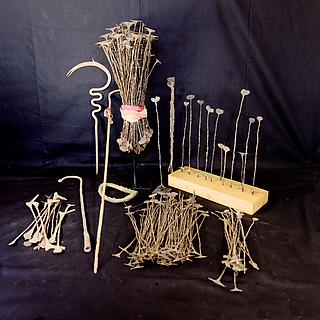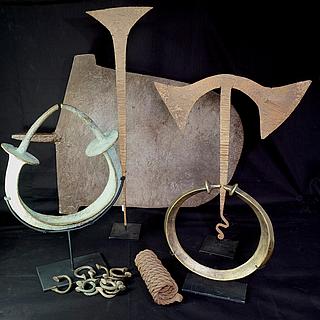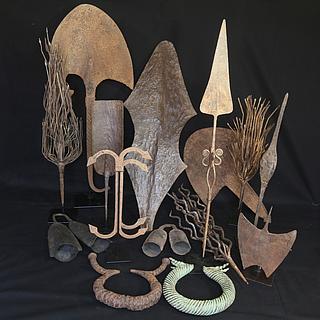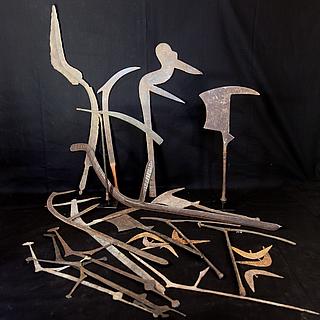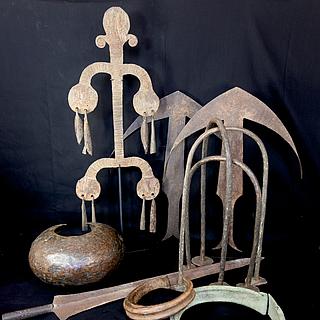AFRICAN TRIBAL CURRENCIES 07
Among the hardly known and collected African utilitarian objects are the precolonial currencies. There is no consensus among authors to a unique definition of money, but basically, they all stress two primary functions of money: a general medium of exchange and a common measure of value. To this we can add secondary functions: a store of value, a function of deferred payments and later a legal tender. At the time the barter economy (e.g. I exchange may grain for your fruit) developed and become more complicated different tribes searched for a medium of exchange. Barter is the exchange of one article for another; currency implies exchange through a media. This media can take different forms: salt, shells, cowries, stones, textiles, beads, metal objects (silver, brass, copper, iron). While some currencies are strictly utilitarian, other are abstract over-or undersized object of the utilitarian basic forms. Gigantic hoe blades from the Afo or small stylized throwing knifes from Southern Chad. Jewelry items grew to unbearable sizes weight and proportions such as the Nigerian torques or the Mbole anklets. While some became elusively medium of exchange. others kept a multiple function money and jewellery (heavy brass anklets and bracelets), money and consumption goods (salt, tea, etc.); money and weapons or tools (spears, hoes, throwing knifes, fishhooks, etc.). Sometimes European copied local currencies shapes to use for their trade especially the slave trade. Nigerian Manillas were imported in large quantities by Portuguese and other European traders. The introduction of large quantities of iron and copper by the European traders and the later introductions of coins and paper money put an end to the monetary function of the traditional African currencies. Nevertheless some could maintain their function as media of exchange until the 1940 ties.
Our collection is mainly composed of Sub-Saharian metal currencies. The starting point of the collection was my stay in West- and Central Africa in the 70ties. Later the collection was completed by acquisition through collectors and galleries in Europe and the USA. Ideally the collection should stay as a whole and could be used for specific exhibitions (museums, galleries, banks, etc.).
See attached bibliography for further information

